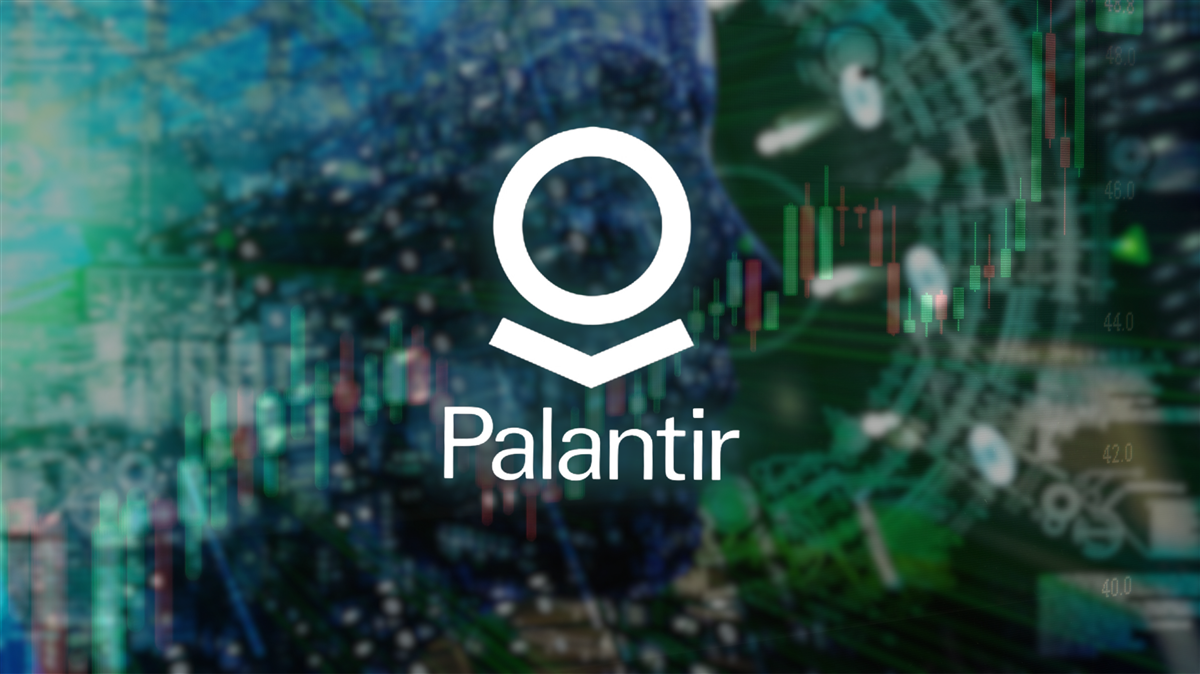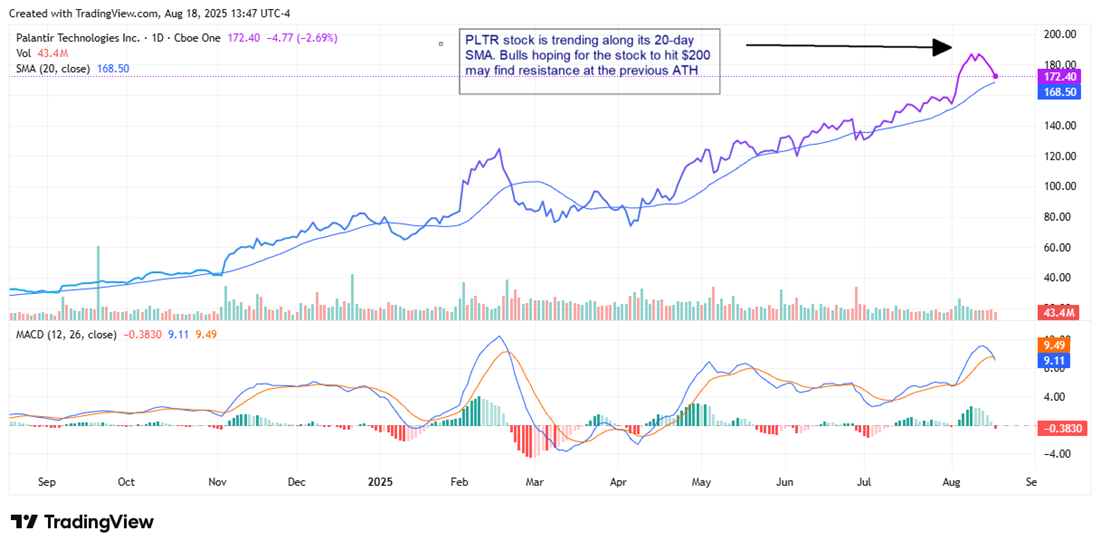 Warren Buffett's cash pile has grown to levels not seen since the last great market selloffs, a sign that he could be expecting lower prices... ͏ ͏ ͏ ͏ ͏ ͏ ͏ ͏ ͏ ͏ ͏ ͏ ͏ ͏ ͏ ͏ ͏ ͏ ͏ ͏ ͏ ͏ ͏ ͏ ͏ ͏ ͏ ͏ ͏ ͏ ͏ ͏ ͏ ͏ ͏ ͏ ͏ ͏ ͏ ͏ ͏ ͏ ͏ ͏ ͏ ͏ ͏ ͏ ͏ ͏ ͏ ͏ ͏ ͏ ͏ ͏ ͏ ͏ ͏ ͏ ͏ ͏ ͏ ͏ ͏ ͏ ͏ ͏ ͏ ͏ ͏ ͏ ͏ ͏ ͏ ͏ ͏ ͏ ͏ ͏ ͏ ͏ ͏ ͏ ͏ ͏ ͏ ͏ ͏ ͏ ͏ ͏ ͏ ͏ ͏ ͏ ͏ ͏ ͏ ͏ |
| | Written by Gabriel Osorio-Mazilli 
Warren Buffett, the legendary value investor, always says investors should never attempt to time the market but rather accumulate time in it so that the long-term effects of economic growth in the United States can affect businesses and their valuations moving forward. However, that’s his recommendation to the masses, not necessarily how he operates. While he is a long-only investor, meaning he cannot bet against companies or indexes, there is a way to measure how bullish or bearish the legendary investor is at any given time. Investors can follow this measure by tracking how much cash (as a percentage of total assets) he holds in his investment company, Berkshire Hathaway Inc. (NYSE: BRK.A). Today’s cash level has not been seen since the last major economic event. This is a potential signal that he is waiting for better deals to come (meaning lower stock prices), which is why examples like 1999, before the dot com bubble burst, or 2008, during the great financial crisis, show Buffett holding so much cash as a percentage of assets. That pattern suggests he may again be waiting for better entry points. For investors today, this backdrop highlights the importance of focusing on high-quality, resilient businesses. Companies like PepsiCo Inc. (NASDAQ: PEP), Waste Management Inc. (NYSE: WM), and Costco Wholesale Corp. (NASDAQ: COST) fit that bill, making them a compelling watchlist in a potentially overvalued market. Pepsi’s Discount Is Still Alive One of the stocks that will require a little less waiting is Pepsi, considering that (despite trading at new 52-week highs) its valuation multiples are still hovering near the lower end of the historical spectrum. The stock’s forward price-to-earnings (P/E) ratio can be a key gauge for investors to watch. Today’s multiple of 18.1x would still provide a discount compared to the historical average of closer to 23.0x, meaning that even before those better deals come about, Pepsi could justify a slow and steady buy scheme known as dollar cost average (DCA). Being part of the consumer staples sector gives Pepsi investors an advantage in this name, considering that demand doesn’t fluctuate that much and that future consumption of the company’s products is relatively stable over time. The company's products are convenient in terms of price and ease of access across many establishments in the United States and overseas. Another benefit of stable finances is rewarding shareholders through items like dividends. Even if Pepsi takes longer to revert to its normal valuation multiples, investors can still lock in a current $5.69 per share payout for an annualized dividend yield of 3.8%. At the same time, they wait for that fair value to come back into the scene. Wall Street Likes Waste Management Stock Technology and innovation will come in and out of style, but what probably never will is the need for garbage and waste disposal. This makes Waste Management a company investors should want to own at the first sign of a decline. This “boring” business has delivered long-term returns almost like clockwork due to its unique business model. This performance is only going to continue into the future, something that Wall Street analysts know and have become very accustomed to. In fact, as of late July 2025, Scotiabank analyst Konark Gupta decided to place a Sector Outperform rating on the stock with a price target of $275 per share. This view stands above the consensus Moderate Buy rating and $254 price target, which call for a 23% upside from the stock's current price. A call above consensus is always a sign of conviction and confidence in a stock’s future potential, which Waste Management has an excess of, as it has shown through its many years of operation. Even with the hyper-growth markets that other industries and areas of the economy have enjoyed, some institutions still see this company as a worthy buy. Those from Ameriprise Financial just boosted their holdings by 1.4% in August 2025, bringing their net position to a high of $1.2 billion today, another sign of high conviction for the future. Costco Is the Premium Stock Like Waste Management’s continued success is a certainty, Costco is also one. It will continue to deliver value to its consumer base and investors who invest in the company’s future. For this reason, the company will be a great value addition to any watchlist in the coming years. This is especially the case if Buffett is right to sit on the sidelines waiting for these discounts to come about, and the market already has its sights on Costco, for that matter. By trading at a P/E ratio 55.5x today, Costco commands a premium above the retail sector’s average 26.5x P/E multiple today. While some investors may view this as expensive, savvy ones will argue that the market is always willing to overpay for companies that remain resilient during a decline and recover quickly from any sign of volatility, making Costco the perfect go-to for investors.  Read This Story Online Read This Story Online |  |
| Written by Ryan Hasson 
DLocal Limited (NASDAQ: DLO) had spent much of the past year flying under the radar. Despite strong fundamentals, the payments technology company traded with little fanfare, hovering near flat year-to-date before its latest earnings. Many investors had possibly relegated it to the misunderstood category. It was seen as a stock with value-like metrics, but no clear catalyst or momentum existed. That changed dramatically following its most recent earnings release, with shares exploding more than 43% in the past week. With growth now accelerating and sentiment shifting, the question is whether the market is finally waking up to this payments giant’s potential. A Quarter That Exceeded All Expectations The headline numbers were impressive by any standard. Total Payment Volume (TPV) reached a record $9.2 billion, up 53% year-over-year and 14% sequentially, marking the third consecutive quarter of >50% growth. Revenue came in at $256.5 million, smashing estimates of $229.7 million. That represents 50% growth versus last year and 18% versus the previous quarter, a dramatic acceleration from the 18% year-over-year growth seen in the prior quarter. Constant currency revenue growth was an even more striking 63%. Profitability was equally impressive. Adjusted EBITDA hit $70.1 million, well ahead of expectations of $55.8 million. That’s up 64% from last year, with margins steady at over 27%. Significantly, efficiency improved too, with adjusted EBITDA-to-gross profit climbing to 71% from 61% a year ago. Free cash flow surged 156% year-over-year to $48 million, even in the middle of the company’s current investment cycle. Operating expenses grew just 9% year-over-year, far below revenue growth, showing clear operating leverage. And with $254 million in cash on hand, even after paying an extraordinary dividend in June, the balance sheet remains rock-solid. Raised Guidance Sparks Re-Rating Potential Management also took the opportunity to raise full-year guidance, now expecting revenue of around $1.01 billion versus $958 million previously estimated, and adjusted EBITDA of $274 million versus $241 million prior. The guidance bump reinforces confidence that this growth momentum is not an isolated quarter but part of a broader acceleration. For years, some investors have questioned DLocal’s transparency and execution. That narrative appears to be shifting under the leadership of CEO Pedro Arnt, formerly CFO of Mercado Libre. The company has sharpened its communication, provided clearer updates, and proven its ability to execute at scale while maintaining efficiency. Growth Vectors and Competitive Positioning On the earnings call, management framed growth within three structural tailwinds: the massive addressable market of underpenetrated digital payments, expansion of share-of-wallet with existing merchants, and the early-stage adoption curve of new clients. The top 20 merchants collectively drive results, underscoring both diversification and the opportunity to deepen relationships with major global players. In a crowded and highly commoditized industry, DLocal continues to differentiate itself by innovating around local payment infrastructure in emerging markets. Its ability to serve global companies in regions with low digital penetration, while maintaining high margins, is a competitive edge not easily replicated. Analysts Begin to Take Notice The strong quarter has also caught the attention of Wall Street. HSBC upgraded the stock from Hold to Buy, raising its price target from $11.50 to $15. HSBC analysts highlighted cost discipline, innovative new products, and improved capital efficiency as reasons for confidence in the company’s long-term trajectory. For a stock that has often been overlooked, this recognition could help drive a long-awaited re-rating. A New Chapter in DLocal’s Story DLocal’s latest results were more than just a beat; they were a statement. Revenue growth is accelerating, profitability remains robust, and the company is showing tangible operating leverage even while investing in future growth. With sentiment shifting, improved leadership communication, and raised guidance, this could mark the start of a new chapter for the stock. For investors, the key question is whether the recent 43% rally has already priced in this optimism, or if the market is only beginning to revalue a payments leader with a massive runway ahead. One thing is for sure: after years of being misunderstood, DLocal is no longer flying under the radar.  Read This Story Online Read This Story Online |  When Trump returned to office, one of his first moves was to tap PayPal's former COO, David Sacks, as a top advisor on crypto and AI. That alone signaled a shift. But insiders close to D.C. aren't just talking crypto policy—they're quietly buying something most retail investors have missed.
While the crowd chases Bitcoin to $150,000, Weiss Ratings expert Juan Villaverde believes a different coin—already backed by giants like Google, Visa, and PayPal—could soon become crypto's "Third Giant." Discover the coin that could define Trump's crypto presidency. |
| Written by Chris Markoch 
Palantir Technologies Inc. (NASDAQ: PLTR) continues to delight shareholders and confound its critics. The company’s latest earnings report shows a company that’s been hitting on all cylinders for quite some time. In the last three years, Palantir has delivered: - Revenue growth of over 90%
- Net income of over 216%
- Operating income over 220%
These are the metrics that Palantir bulls use to justify the company’s lofty valuation and massive stock price growth in the past three years. One of the company’s primary customers is the U.S. government, particularly the U.S. Department of Defense (DoD). Originally, this revenue took the form of pilot programs, which may be referred to as “proof of concept” contracts. However, with the explosive demand for artificial intelligence (AI) over the past three years, Palantir’s AIP (Artificial Intelligence Program) has turned the company into an entrenched incumbent. Multiple branches of the U.S. military now use the AIP program in contracts that ensure multi-year deployments. But even that may undersell the company’s future growth. Leaning Into a More Efficient Pentagon Part of the bear case for Palantir is that government contracts don’t always materialize in their expected timeframe. That was the case for BigBear.ai Holdings Inc. (NYSE: BBAI) last week. BBAI stock moved significantly lower after it reported that its year-over-year (YOY) revenue declined by $32.5 million because of disruptions to its contract with the U.S. Army. The company also lowered its full-year guidance for the same reason. Compare that to the 53% YOY growth Palantir notched in its government business, and you see why Palantir shareholders remain bullish. The recent passage of the One Big Beautiful Bill will increase the Department of Defense (DoD) budget to over $900 billion. Of that, $150 billion will be allocated for disruptive defense technologies. That number balloons to $320 million when the Department of Homeland Security (DHS) is included. This includes the company’s significant contracts with the Immigration and Customs Enforcement (ICE) division. Palantir is a long-time contractor for DHS, and its comprehensive, cloud-based law enforcement platform makes it an entrenched incumbent. That incumbent status was confirmed by the U.S. Army, which combined 75 contracts into one $10 billion award to Palantir. While skeptics will point out that this isn’t “new” revenue for the company, the bulls will counter that the removal of contract fees will allow Palantir to expand its bottom-line growth over the life of the contract. Commercial Growth: Palantir's Next Frontier It’s not going to happen anytime soon, but there is a possibility that, by the end of the decade, Palantir may generate more revenue from the commercial side of its business than it does from its government contracts. In the company’s August earnings report, overall commercial revenue was 44% of its total. In the United States, the percentage was slightly lower at 41%. However, investors should be careful not to look at this number in a vacuum. To begin with, it’s significantly higher than it was in prior years. Second, Palantir is growing its commercial business at a faster rate than its government business. The Path to $200 May Take Time PLTR stock has been one of the hottest technology stocks since late 2024. However, a drop of approximately 40% in early 2025 interrupted that. However, that turned out to be a solid buying opportunity. The stock is finding support around its 20-day simple moving average (SMA), which currently sits around $168.50. As the market heads into what is typically its worst month, the MACD line is slightly above its signal line, showing declining positive momentum. It also suggests that PLTR stock may move lower in the short term. Investors looking for a dip to buy can look for near-term support at the following areas: - $168–169: 20-day SMA zone; strong short-term support.
- $160–162: Previous consolidation zone from July–August 2025.
- $150–152: March–June 2025 breakout area; secondary support if a stronger pullback occurs.

Bullish investors have been eyeing $200 as a "large number” price target. That’s a price target backed by Dan Ives of Wedbush. However, in the short term, the bulls may have to decide if an area around $190, which would make a new all-time high (ATH) is enough to get involved.  Read This Story Online Read This Story Online |  Jeff Brown recently traveled to a ghost town in the middle of an American desert…
To investigate what could be the biggest technology story of this decade.
In short, he believes what he's holding in his hand is the key to the $100 trillion AI boom…
And only one company here in the U.S. can mine this obscure metal. Click here to get the details on this virtual monopoly. |
| More Stories |
| |
|
|
0 Response to "🦉 The Night Owl Newsletter for August 19th"
Post a Comment